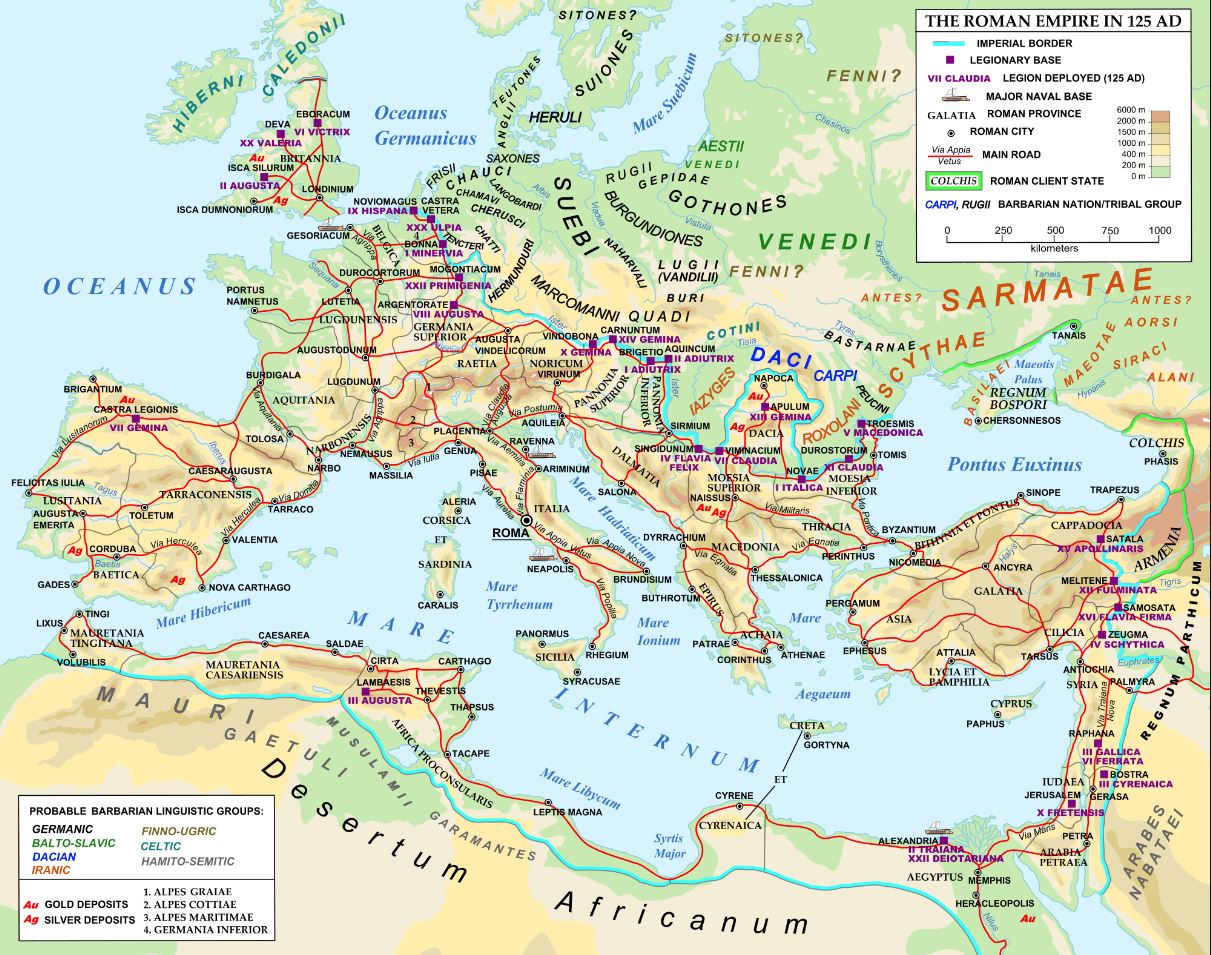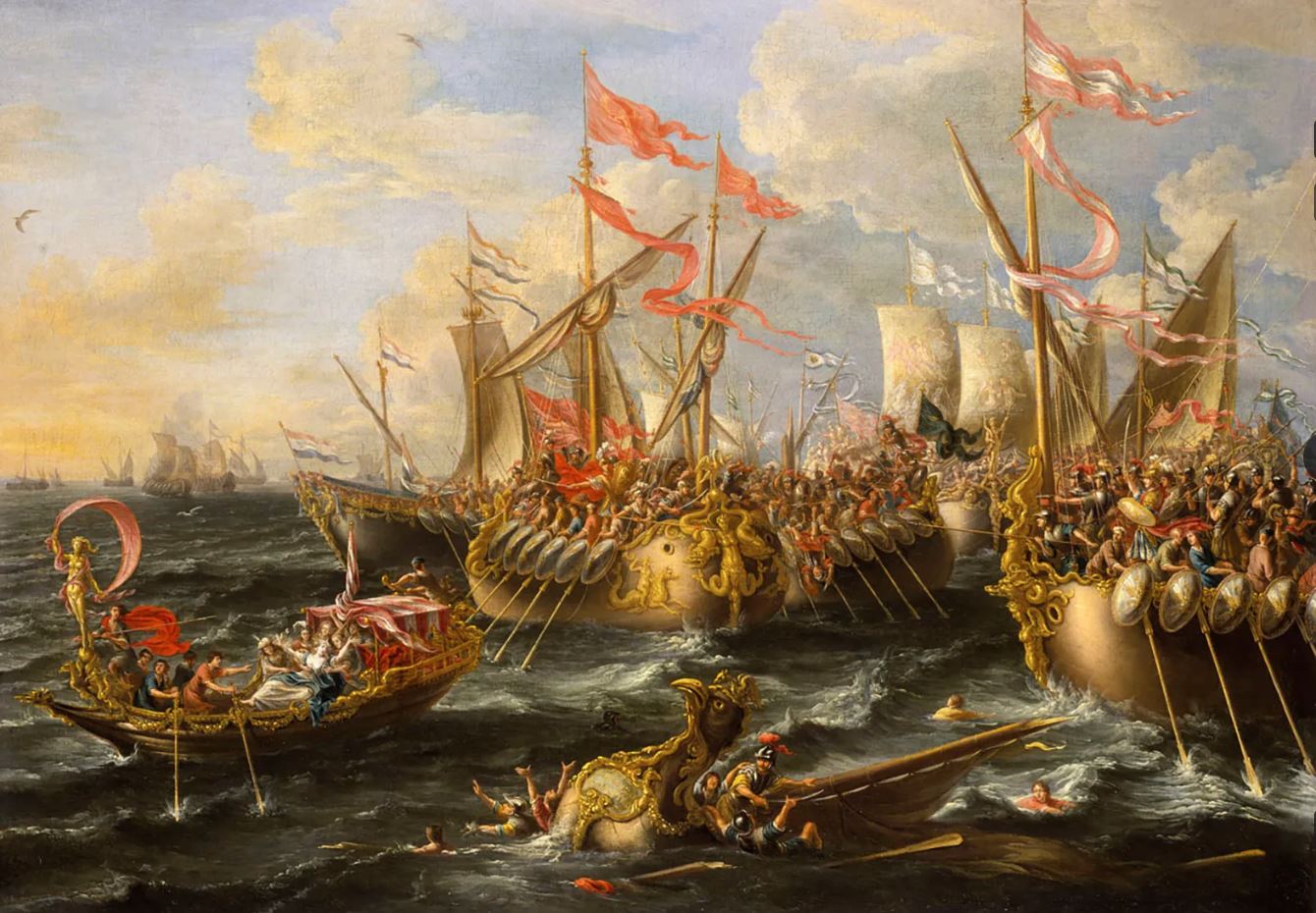
The presence of ancient Romans in the Americas is a subject that has captured the imagination of historians, archaeologists, and enthusiasts for centuries. While there is no concrete evidence to suggest that Romans made significant, direct contact with the Americas before Christopher Columbus’s voyages in the late 15th century, some theorists have speculated about the possibility of Roman exploration and influence in the New World.
The idea of ancient Roman exploration of the Americas is largely rooted in speculation and controversial interpretations of historical evidence. Proponents of this theory often point to a few key pieces of evidence and conjectures to support their claims.
One of the most frequently cited pieces of evidence is the presence of Roman coins allegedly discovered in North America and South America. Several artifacts resembling Roman coins have been unearthed at various sites across the continents, sparking debate among scholars about their authenticity and origin. Hordes of many centuries old Roman coinage have been found in Canada, Maine, Kentucky (at Breathitt County), Texas, and Venezuela. In 1963, ancient Roman coinage were allegedly dug up out of the ground in Tucson, Arizona. In Texas, at the bottom of a Native American Indian mound at Round Rock, early historic Roman coins were unearthed. The mound dates from approximately 800 AD. Skeptics theorize that the coins were dropped on top of the mound in recent times, and then were carried by rodents and tree roots to the bottom. In another state, in 1963, two hordes of Roman coins, the second group in much better preservation than the first group, were found during bridge construction on the north bank of the Ohio River, at the Falls of the Ohio, opposite Louisville, Kentucky by a construction engineer who was working on the projection.
Two of these coins, in 1997,were donated to the new Falls of the Ohio Museum in Clarksville, Indiana, not far from the acquisition site. The rest of the coins remained in the private hands. However, many experts argue that these coins, which are real very old historical items could have been owned by people who bought them in coin shops or otherwise by dealers at coin shows or through the mail and can be hoaxes or simply such coins that became lost by their owners and later on, even a bunch of years later, found by someone else. In other cases of ancient Roman metal monies, skeptics believe that these finds can be misidentifications of other coins, or artifacts that arrived in the Americas through trade routes long after the Roman era.
Despite these tantalizing clues, the consensus among mainstream historians is that there is insufficient evidence to support the theory of direct Roman contact with the Americas before the arrival of European explorers in the late 15th century. The Roman Empire, at its height, did possess advanced seafaring capabilities and a spirit of exploration, as evidenced by the voyages of figures like Julius Caesar and the Roman historian Pliny the Elder. However, there is no compelling historical documentation or archaeological findings to suggest that Romans reached the Americas.

That said, the idea of ancient Roman voyages to the New World continues to capture the public’s imagination and inspire speculation. Some alternative historians and enthusiasts have proposed elaborate theories about secret Roman expeditions, lost civilizations, and hidden evidence waiting to be discovered. While these ideas may make for intriguing storytelling, they remain firmly in the realm of speculation until supported by concrete evidence.
Rock Carvings and Petroglyphs: Some proponents of the theory of Roman contact with the Americas point to rock carvings and petroglyphs found in various locations throughout the continent. While these carvings often depict ambiguous symbols and figures, some enthusiasts interpret them as evidence of transoceanic voyages by ancient seafarers, including Romans.
Ancient Architecture and Ruins: Certain architectural features and ruins discovered in the Americas have led some theorists to speculate about possible Roman influence. For example, the existence of rounded arches and other architectural elements reminiscent of Roman design in structures like the so-called “Cyclopean” walls of ancient Peru has fueled speculation about potential transoceanic connections. However, mainstream archaeologists attribute these architectural similarities to independent developments within indigenous American civilizations.
Genetic and Linguistic Studies: Some proponents of the Roman contact theory point to genetic and linguistic studies suggesting European DNA and linguistic influences among certain Native American populations. One example is that there are many similarities between Latin (the ancient official language of the Roman Empire) and a dialect of the now extinct Karankawas tribe. While these studies have indeed revealed instances of genetic and linguistic diversity among indigenous peoples, they do not provide conclusive evidence of direct Roman contact.
Legend and Oral Tradition: Indigenous oral traditions and legends occasionally include references to distant visitors or encounters with foreign peoples. Some enthusiasts interpret these stories as vague memories of interactions with ancient Roman explorers or other pre-Columbian voyagers. Are stories of white gods from various Native Central and South American Indian tribes based on meetings with Romans and other Europeans ? Interpreting oral traditions can be highly subjective, and without corroborating archaeological evidence, such claims remain speculative.
While these examples and theories may pique curiosity and imagination, it’s important to approach them critically and evaluate them within the broader context of established historical and archaeological knowledge. The absence of concrete evidence, combined with the lack of support from mainstream academic research, suggests that the idea of Romans in ancient America remains more speculative than substantiated by empirical data. As our understanding of history continues to evolve, new discoveries and interpretations may shed further light on the complex interactions between different civilizations across the globe.
The discovery of a small ancient European looking head terracotta artifact in Mexico in 1933 within Calixtlahuaca, in the Toluca Valley about sixty kilometers west of Mexico City at an undisturbed burial site by archeologist Jose Garcia Payon, presents a fascinating puzzle in the realm of historical archaeology, hinting at intricate connections between distant civilizations. This artifact, though seemingly out of place in its geographical context, offers profound insights into the complexities of transoceanic interactions and cultural exchanges during the colonial period.

The European head terracotta is a testament to the multifaceted nature of colonial encounters between Europe and the Americas. Its discovery challenges conventional narratives of history and prompts scholars to reconsider the dynamics of cultural diffusion and hybridization in the early modern world.
The terracotta head itself is a remarkable piece of craftsmanship, reflecting the artistic sensibilities of its time. Carved with intricate detail, it bears the distinctive features of European physiognomy—aquiline nose, prominent cheekbones, and deeply set eyes. The craftsmanship suggests a level of skill and familiarity with European artistic traditions that is unexpected in a Mexican context. The anthropologist Robert Heine-Geidern identified the artifact as “unquestionably” from the Hellenistic-Roman school of art, and he suggested a date of “around 200 AD.”
The presence of such an artifact in Mexico raises a host of intriguing questions. How did this European head terracotta find its way to the shores of Mexico? What networks of trade, migration, or conquest facilitated its journey across the Atlantic? And what significance did it hold for the individuals or communities who possessed it?
One plausible explanation is that the artifact arrived in Mexico as part of the extensive exchange networks that emerged in the wake of European exploration and colonization. The Spanish conquest of the Aztec Empire in the early 16th century ushered in an era of unprecedented encountering between Europe and the Americas. Spanish galleons crisscrossed the Atlantic, carrying not only soldiers and settlers but also a myriad of goods, ideas, and cultural artifacts.
It is conceivable that the European head terracotta was among the many items traded or plundered during this period of upheaval. Perhaps it adorned the halls of a colonial estate, serving as a symbol of prestige and sophistication for its European owners. Alternatively, it might have found its way into the hands of indigenous craftsmen, who incorporated elements of European style into their own artistic traditions, creating a fusion of cultures that is evident in the artifact’s design. The discovery of the European head terracotta underscores the fluidity and complexity of cultural identity in colonial Mexico. It serves as a poignant reminder that history is not a simple narrative of conquest and domination, but rather a tapestry woven from the diverse threads of human experience. By studying artifacts such as this terracotta head, archaeologists and historians gain valuable insights into the interconnectedness of the past and the myriad ways in which cultures collide, converge, and transform over time.
The finding of a Roman-looking sword at Oak Island, Canada, has sparked intrigue and speculation among historians, archaeologists, and enthusiasts alike. The find presents a compelling mystery that raises questions about the possibility of ancient transoceanic voyages and connections between civilizations separated by vast distances and time. Oak Island, located off the coast of Nova Scotia, has long been a site of fascination due to persistent legends of buried treasure and mysterious artifacts. While many claims regarding the island’s supposed treasures have been met with skepticism, the discovery of a sword with Roman characteristics adds a new layer of complexity to the island’s enigmatic history.
The sword itself is a remarkable artifact, bearing striking similarities to Roman weapons of the classical era. Its design, materials, and craftsmanship suggest a level of sophistication and technical expertise consistent with Roman military technology. The blade, typically the most crucial aspect of a sword, likely exhibits distinctive features such as its shape, composition, and method of construction that align with Roman metallurgical practices. The presence of a sword of Roman appearance at Oak Island raises a host of tantalizing questions. How did such an artifact come to be buried on a remote island off the coast of Canada? What journey did it undertake to reach its final resting place? And perhaps most intriguingly, what implications does its discovery hold for our understanding of ancient maritime exploration and trade routes?
One prevailing theory posits that the sword may be evidence of pre-Columbian contact between Europe and North America. While mainstream historical narratives emphasize the isolation of the Americas prior to the arrival of Christopher Columbus in 1492, there is growing evidence to suggest that transoceanic voyages and cultural exchanges may have occurred centuries earlier. Proponents of this theory point to the presence of other artifacts and geological anomalies on Oak Island that defy conventional explanations. They argue that the sword, along with other purportedly ancient relics found in the vicinity, may be remnants of an early transatlantic expedition, perhaps undertaken by Roman explorers, Phoenician traders, or other seafaring civilizations.
Near the Canadian province of Nova Scotia, at Oak Island, there was a well preserved bronze sword with a decorative hilt that is called a gladius. These swords were not used in warfare, but were ceremonious weapons typical of ancient Rome. At the beginning of the 20th century, this sword by discovered by a local fisherman. Also found at the bottom of the water where the sword has lain were wooden remnants from a shipwreck from an unknown; unidentified ship.
However, skepticism abounds regarding such claims, and the discovery of the Roman-looking sword at Oak Island has yet to be conclusively verified or authenticated by experts. Critics argue that the artifact may be a modern reproduction or a case of mistaken identity, highlighting the need for rigorous scientific analysis and peer review to determine its authenticity and provenance. Regardless of its ultimate origin, the discovery of the Roman-looking sword at Oak Island serves as a poignant reminder of the enduring allure of exploration and discovery. It invites us to reconsider the boundaries of our knowledge and to remain open to the possibility of unexpected connections and discoveries that challenge our understanding of the past. As researchers continue to investigate the mysteries of Oak Island, the sword stands as a silent sentinel, bearing witness to the enduring mysteries that lie beneath the surface of history.

The Iron Umbo Roman Helmet found in 1901 at Oak Island, Canada, is a captivating artifact that has stirred curiosity and speculation among historians, archaeologists, and treasure hunters for years. The helmet, believed to be of Roman origin, has fueled theories about ancient transoceanic voyages and potential connections between disparate cultures. Oak Island, situated off the coast of Nova Scotia, Canada, has long been a focal point for treasure seekers and enthusiasts. The island gained notoriety in the late 18th century due to rumors of hidden treasure and mysterious artifacts buried beneath its surface. Among the artifacts purportedly discovered on Oak Island, the Iron Umbo Roman Helmet stands out as a particularly intriguing find.
The helmet’s design and craftsmanship suggest Roman origins, bearing resemblance to the iconic helmets worn by Roman soldiers during the height of the Roman Empire. The umbo, or central boss, of the helmet is a distinctive feature, adding to its authenticity and historical significance.
The presence of a Roman artifact on Oak Island raises numerous questions and hypotheses about how it came to be there. One theory posits that ancient Romans may have journeyed across the Atlantic Ocean, possibly exploring North American shores long before the commonly accepted timeline of European exploration. Proponents of this theory point to evidence of Roman contact with other ancient civilizations, such as the discovery of Roman artifacts in sites like Pompeii and Herculaneum.
However, the lack of concrete archaeological evidence linking the helmet to a specific Roman expedition or historical context complicates efforts to authenticate its origins. Without corroborating evidence such as Roman shipwrecks or settlements along the North American coast, the presence of a single artifact remains inconclusive in determining the extent of ancient Roman contact with the Americas. Despite the uncertainties surrounding the Iron Umbo Roman Helmet, its discovery underscores the enduring fascination with Oak Island and the quest for hidden treasures and lost civilizations. The ongoing exploration and speculation surrounding the island serve as a testament to humanity’s enduring curiosity and thirst for discovery, inspiring countless adventurers to unravel the mysteries that lie beneath its enigmatic surface.

The stone with Roman-like writing discovered at Oak Island, Canada, is a captivating artifact that has added yet another layer of intrigue to the island’s enigmatic history. Oak Island, situated off the coast of Nova Scotia, has long been shrouded in mystery and speculation due to rumors of hidden treasures and unexplained phenomena. The discovery of a stone bearing inscriptions reminiscent of Roman script has further fueled speculation about the island’s past and possible connections to ancient civilizations.
The stone, believed to have been found during excavations or exploratory digs on Oak Island, features characters resembling Roman alphabet letters. The presence of such inscriptions has prompted theories about potential contact between ancient Romans and North America, centuries before the commonly accepted timeline of European exploration.
Historians and archaeologists have scrutinized the stone and its inscriptions in an effort to decipher its meaning and ascertain its authenticity. Some experts suggest that the inscriptions may be mere coincidental markings or natural formations, while others contend that they represent deliberate carvings made by human hands.
The possibility of Roman contact with North America has intrigued scholars for decades, with proponents citing circumstantial evidence and historical precedents to support their claims. References to Roman artifacts and inscriptions discovered in other parts of the world, along with theories of ancient transoceanic voyages, have fueled speculation about the extent of Roman exploration and colonization. However, skepticism abounds regarding the authenticity and provenance of the Oak Island stone and its inscriptions. Critics argue that the inscriptions may be the result of modern tampering or misinterpretation, rather than genuine artifacts from antiquity. Without conclusive evidence linking the stone to a specific historical context or civilization, its significance remains a subject of debate and speculation.
The locating of the stone with Roman-like writing adds another chapter to the ongoing saga of Oak Island, fueling the imaginations of treasure hunters, historians, and enthusiasts alike. Whether the inscriptions represent genuine evidence of ancient contact or simply serve to deepen the island’s mystique, they serve as a reminder of humanity’s enduring fascination with the unknown and our quest for discovery in the most unexpected places. As exploration and research continue, the secrets of Oak Island may yet reveal themselves, shedding light on the mysteries that lie buried beneath its storied surface. The discovery of part of an ancient Roman ship in Texas in 1915 remains one of the most intriguing and controversial archaeological finds in American history. The unearthing of this artifact has raised questions about potential transoceanic voyages and trade networks between ancient civilizations and the New World.
The story begins in 1915 when a group of workers digging a foundation for a building near the town of Rockport, Texas, made an astonishing discovery. Buried beneath layers of sediment and soil, they unearthed a large wooden hull believed to be part of an ancient Roman ship. The find sent shock waves through the archaeological community and sparked widespread speculation about its origins and significance. The wooden hull exhibited craftsmanship and construction techniques consistent with Roman shipbuilding methods of the first centuries CE. It featured intricate joinery, wooden pegs, and planking indicative of ancient Mediterranean shipbuilding traditions. The size and design of the hull suggested that it may have been a cargo vessel used for maritime trade.

There is another report, much earlier, of discovering a seemingly eons old Roman shipwreck in Texas; that in 1886; the remains of this Roman ship were found in Galveston Bay, Texas.. But, nautical experts have dismissed this claim, while admitting that certain Roman Era ships could have reached what much later became America; reaching even into Texas.
The procurements of Roman vessels debris of the waters in Texas raised several compelling questions:
Transoceanic Voyages: The possibility of transatlantic voyages between the Mediterranean and the Americas in antiquity. If confirmed, this discovery would challenge conventional beliefs about the extent of ancient seafaring capabilities and trade networks.
Trade and Exploration: The Roman Empire was known for its extensive trade routes and maritime exploration across the Mediterranean and beyond. The discoveries of Roman ships in Texas hinted at the potential for direct or indirect contact between ancient Romans and indigenous peoples of the Americas.
Natural Forces or Human Activity: Skeptics raised doubts about the authenticity of these finds, suggesting that the wooden hull may have been transported to Texas by natural forces such as ocean currents or deposited by human activities such as colonial-era trade or salvage operations.
Despite the initial excitement surrounding such discoveries, the authenticity of the Roman shipwrecks in Texas remains a subject of debate among archaeologists and historians. The lack of conclusive evidence, including datable artifacts or corroborating historical records, has cast doubt on the authenticity of the finds. Some researchers have proposed alternative explanations, suggesting that the wooden hull may have been part of a later shipwreck or even a hoax perpetrated for financial gain or notoriety. Without additional archaeological evidence and scholarly scrutiny, the true origins and significance of the Roman ships found in Texas may remain shrouded in mystery.
Nevertheless, the detections of the shipwrecks in Texas serves as a reminder of the enduring fascination with exploration, discovery, and the mysteries of the past. Whether authentic or not, the stories of the Roman vessels uncovered in Texas continues to capture the imagination and curiosity of historians, archaeologists, and enthusiasts around the world. Also in Galveston Bay, Texas, the timbers of a bridge seemingly of a time of yore were discovered fifth teen feet of sediment. Was this very, very old bridge built by Native American Indians or Romans?
As of my last update in January 2022, there hasn’t been any credible evidence or archaeological findings that suggest early Romans made contact with North or South America. The known history of ancient Rome primarily revolves around its interactions with regions within Europe, North Africa, and parts of Asia. However, there have been instances where objects of Roman origin have been discovered in regions far from the Roman Empire’s sphere of influence. Deep in a “Well of Sacrifice” at Chichen Itza, Mexico, a doll was recovered, made of wood and wax, on which was written Roman script. Such discoveries often spark speculation and theories about potential transoceanic encounters or trade routes. Still, most of these claims lack substantial evidence and are often dismissed by mainstream archaeologists and historians.
In some cases, objects attributed to Roman origin found in the Americas, as broken pottery pieces found many years ago in Mexico, are either hoaxes, misinterpretations of indigenous artifacts, or the result of more recent association during the post-Columbian era.
It’s important to approach claims of ancient Roman artifacts in the Americas with skepticism and scrutinize them against rigorous archaeological standards and evidence-based research. While the idea of transoceanic contact between ancient civilizations is intriguing, extraordinary claims require extraordinary evidence, which has yet to be substantiated in the case of Roman artifacts in the Americas. But, let us realize that detailed information on Roman travels of yore to the Americas could have existed at the Great Library of Alexandria, Egypt. However, that library suffered from three fires in its history and the last fire in 640 AD by the order of the Muslim Caliph Omar to the general of a conquering Muslim army that completely destroyed the library and all its very.very numerous literary works (books, scrolls, reports, essays, treatises, stories compositions, and poetry writings).
Also, in conclusion of this article, consider this question: “Why are countries starting from Mexico and going downward throughout South American called Latin America? Is the real answer because European explorers, and European settlers, centuries ago, recognized a considerable amount of Latin (the language of when Rome was young) being spoken within the many different languages of the Native Indian peoples of the Americas?


